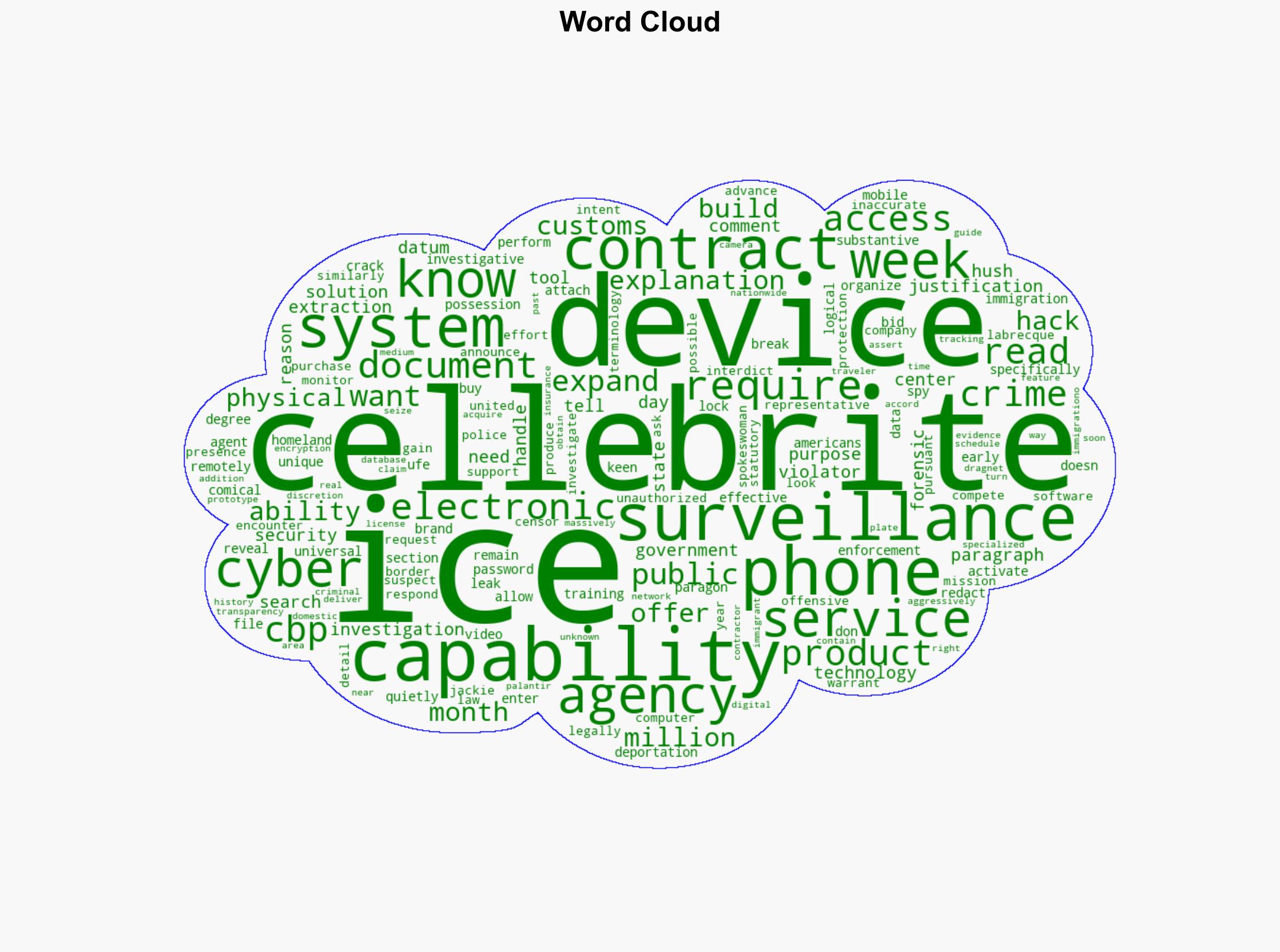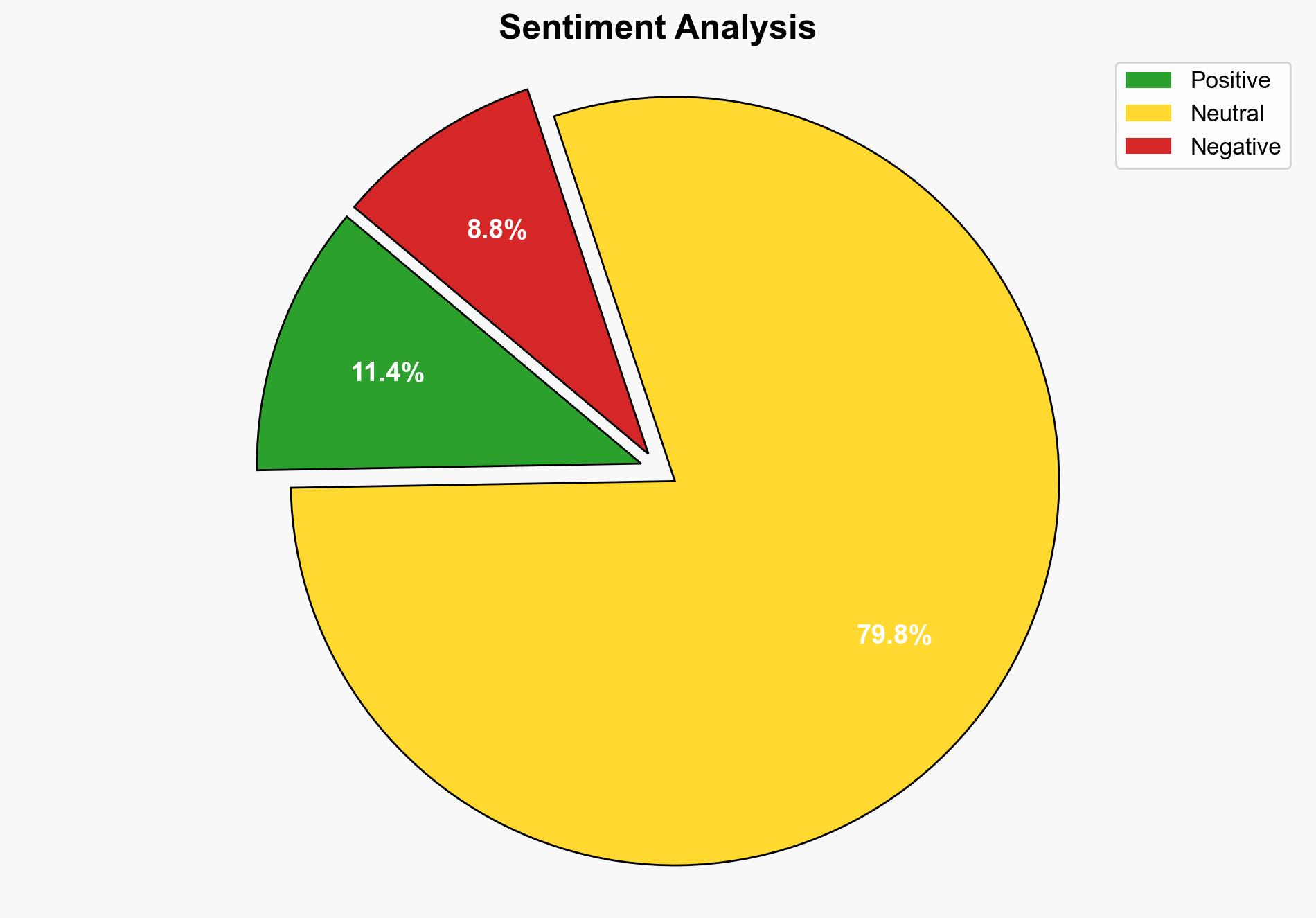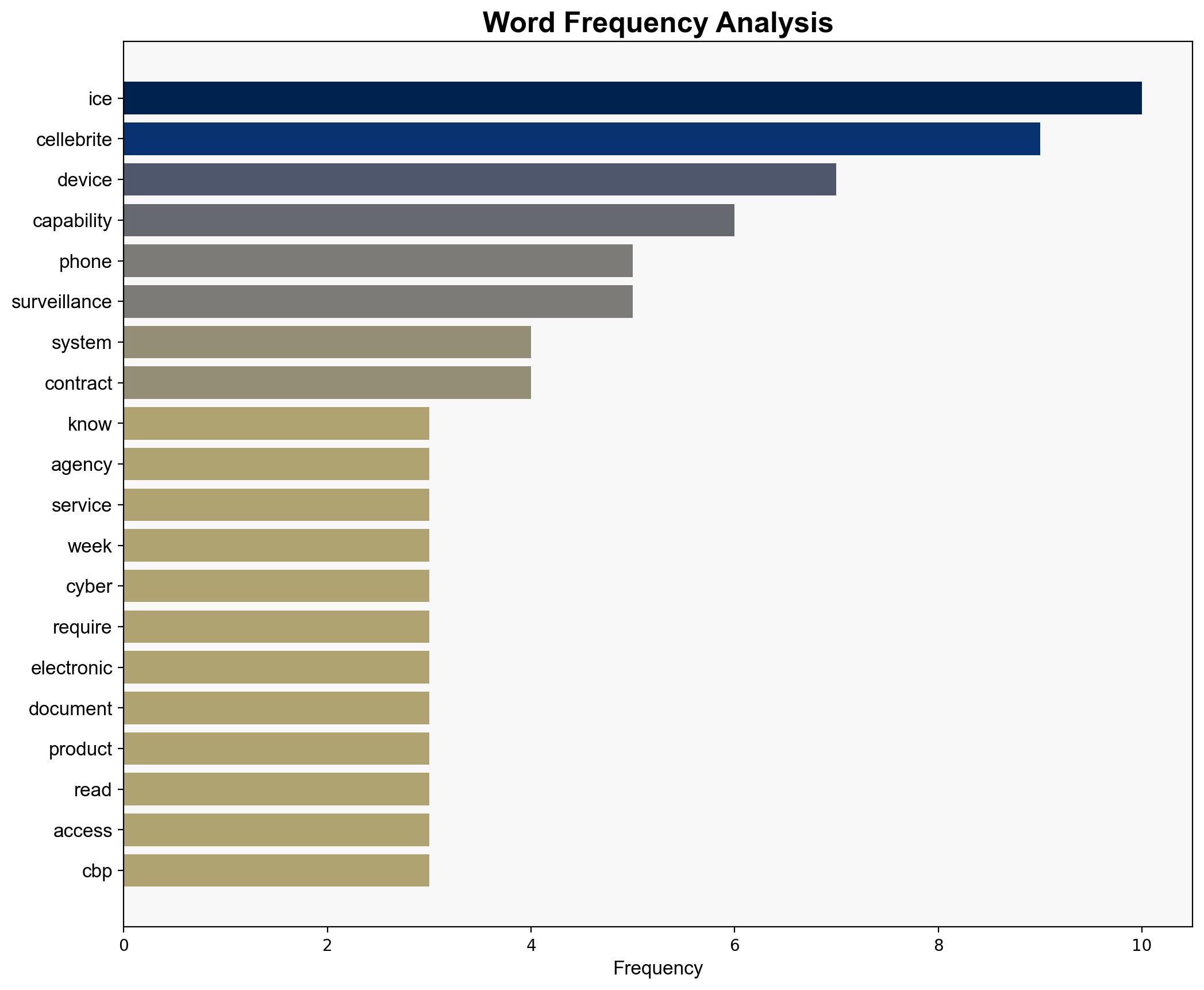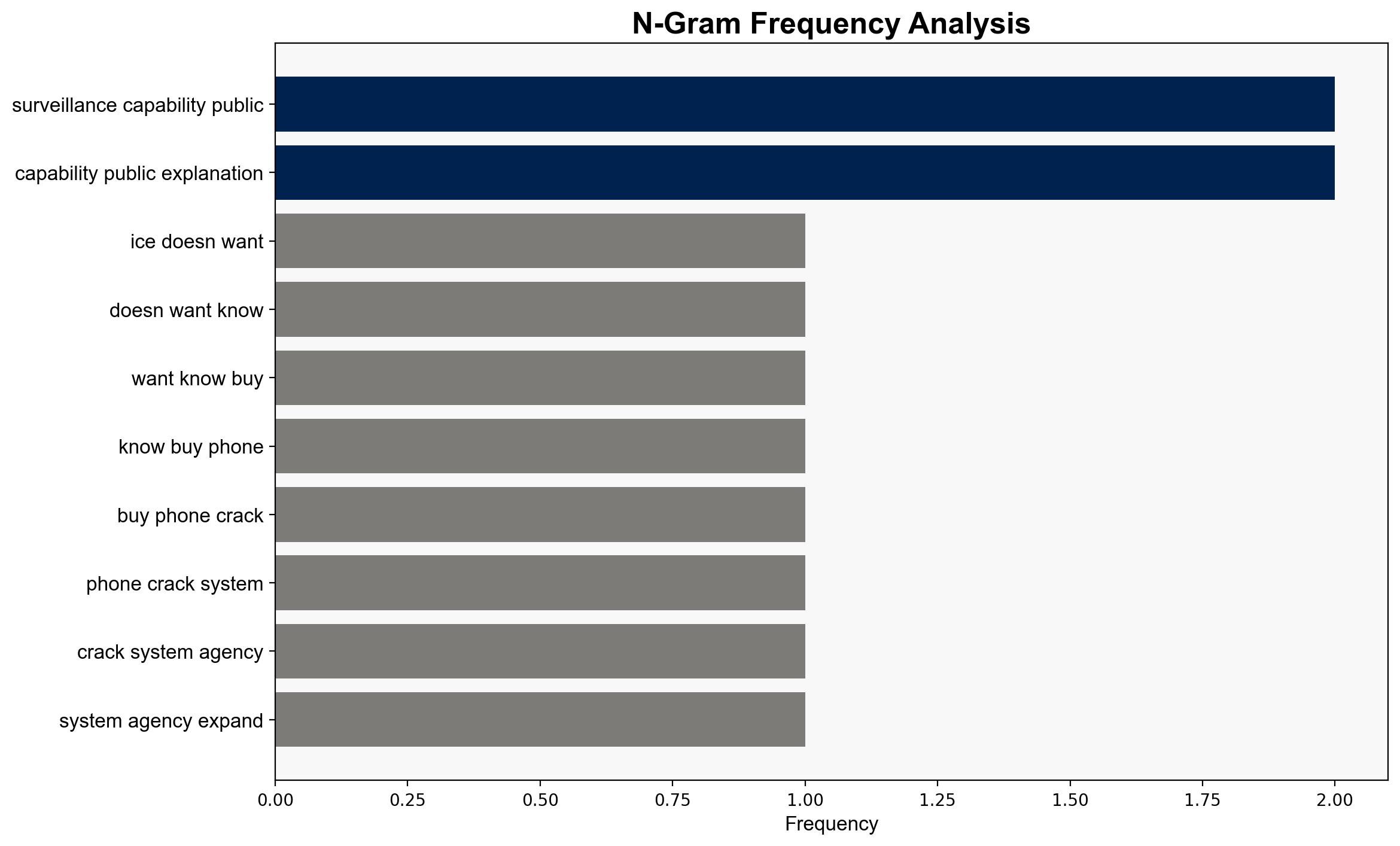ICE Doesn’t Want You To Know Why They Bought a Phone Cracking System – Reason
Published on: 2025-09-29
Intelligence Report: ICE Doesn’t Want You To Know Why They Bought a Phone Cracking System – Reason
1. BLUF (Bottom Line Up Front)
The most supported hypothesis is that ICE is expanding its surveillance capabilities to enhance its enforcement and investigative functions, particularly in cybercrime and organized crime contexts. This conclusion is drawn with moderate confidence due to the lack of transparency and redacted documentation. It is recommended that oversight bodies demand greater transparency and justification from ICE to ensure compliance with legal and ethical standards.
2. Competing Hypotheses
1. **Hypothesis A**: ICE is enhancing its surveillance capabilities to improve its operational effectiveness in combating organized crime and cyber threats. This involves using advanced phone-cracking technology to access encrypted data crucial for investigations.
2. **Hypothesis B**: ICE is expanding its surveillance capabilities as part of a broader strategy to increase domestic monitoring, potentially infringing on civil liberties without sufficient oversight or justification.
Using Analysis of Competing Hypotheses (ACH), Hypothesis A is better supported by the evidence, such as the stated need for forensic extraction tools and the focus on cybercrime. However, the lack of transparency and redacted documents lend some credence to Hypothesis B.
3. Key Assumptions and Red Flags
– **Assumptions**: It is assumed that ICE’s stated purpose for acquiring the technology is accurate and that there are legal frameworks guiding its use.
– **Red Flags**: The extensive redaction of documents and lack of public explanation raise concerns about potential overreach and misuse of surveillance technology.
– **Blind Spots**: The absence of independent oversight or third-party audits of ICE’s use of such technology could lead to unchecked expansion of surveillance capabilities.
4. Implications and Strategic Risks
– **Patterns**: The acquisition of advanced surveillance tools by ICE aligns with broader trends of increased domestic surveillance by government agencies.
– **Cascading Threats**: Potential erosion of public trust in government agencies and increased tension between privacy advocates and law enforcement.
– **Escalation Scenarios**: If unchecked, this could lead to widespread public backlash and legal challenges, potentially impacting ICE’s operational capabilities and public image.
5. Recommendations and Outlook
- **Mitigation**: Encourage legislative and judicial oversight to ensure ICE’s use of surveillance technology complies with legal standards and respects civil liberties.
- **Exploitation**: Leverage the technology to effectively combat organized crime while maintaining transparency to build public trust.
- **Scenario Projections**:
– **Best Case**: Enhanced capabilities lead to significant breakthroughs in combating cybercrime and organized crime, with public support due to transparency.
– **Worst Case**: Public backlash and legal challenges due to perceived overreach and privacy violations.
– **Most Likely**: Incremental improvements in ICE’s operational effectiveness with ongoing debates over privacy and oversight.
6. Key Individuals and Entities
– **Cellebrite**: The company providing the phone-cracking technology.
– **Jackie Labrecque**: Spokeswoman for Cellebrite.
7. Thematic Tags
national security threats, cybersecurity, counter-terrorism, regional focus





